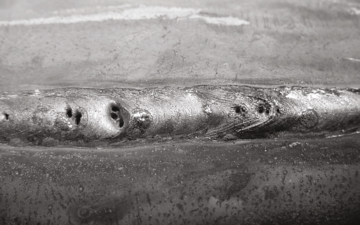Discover What is Porosity in Welding and Its Result on Architectural Stability
Discover What is Porosity in Welding and Its Result on Architectural Stability
Blog Article
Understanding Porosity in Welding: Exploring Causes, Effects, and Avoidance Strategies
Porosity in welding is a persistent difficulty that can substantially influence the high quality and integrity of welds. As professionals in the welding sector are aware, understanding the causes, effects, and prevention techniques associated to porosity is important for accomplishing durable and reputable welds. By delving right into the origin of porosity, analyzing its damaging results on weld quality, and discovering effective avoidance approaches, welders can boost their knowledge and skills to generate high-grade welds regularly. The elaborate interplay of elements adding to porosity needs a detailed understanding and a positive method to make certain successful welding outcomes.
Usual Reasons of Porosity
Contamination, in the kind of dust, oil, or rust on the welding surface area, produces gas pockets when warmed, leading to porosity in the weld. Inappropriate protecting takes place when the securing gas, typically utilized in procedures like MIG and TIG welding, is not able to totally safeguard the liquified weld swimming pool from reacting with the bordering air, resulting in gas entrapment and succeeding porosity. Furthermore, inadequate gas coverage, usually due to inaccurate circulation rates or nozzle positioning, can leave parts of the weld unprotected, enabling porosity to form.
Impacts on Weld Top Quality
The visibility of porosity in a weld can considerably endanger the overall top quality and integrity of the welded joint. Porosity within a weld produces gaps or dental caries that weaken the structure, making it a lot more at risk to breaking, rust, and mechanical failing.
Furthermore, porosity can hinder the performance of non-destructive screening (NDT) strategies, making it testing to find other issues or suspensions within the weld. This can bring about considerable safety and security problems, especially in essential applications where the architectural integrity of the bonded components is vital.

Avoidance Techniques Introduction
Given the harmful effect of porosity on weld quality, reliable prevention techniques are critical to preserving the structural stability of welded joints. Furthermore, selecting the proper welding parameters, such as voltage, existing, and travel speed, can aid lessen the risk of porosity formation. By incorporating these prevention methods right into welding methods, the occurrence of porosity can be significantly lowered, leading to more powerful and extra dependable bonded joints.
Value of Appropriate Protecting
Appropriate securing in welding plays a vital role in stopping atmospheric contamination and making sure the honesty of bonded joints. Protecting gases, such as argon, helium, or a mixture of both, are commonly used to protect the weld pool from reacting with components in the air like oxygen and nitrogen. When these reactive aspects come into call with the warm weld swimming pool, they can create porosity, bring about weak welds with lowered mechanical buildings.

Poor protecting can lead to different flaws like porosity, spatter, and oxidation, compromising the structural integrity of the welded joint. Adhering to appropriate shielding practices is crucial to generate high-grade welds with marginal defects and make certain the durability and reliability of the welded components.
Monitoring and Control Methods
Exactly how can welders successfully keep track of and control the welding procedure to guarantee optimum outcomes and prevent flaws like porosity? By constantly monitoring these variables, welders can recognize deviations from the ideal conditions and make prompt modifications to prevent porosity development.

Additionally, applying appropriate training programs for welders is important for checking and controlling the welding process effectively. What is Porosity. Enlightening welders on the value of maintaining consistent parameters, such as appropriate gas protecting and take a trip speed, can assist click this protect against porosity problems. Regular assessments and certifications can also guarantee that welders are skillful in surveillance and regulating welding procedures
In addition, the usage of automated welding systems can boost tracking and control capacities. These systems can precisely regulate welding parameters, lowering the possibility of human error and making certain consistent weld high quality. By integrating read innovative monitoring innovations, training programs, and automated systems, welders can effectively keep track of and regulate the welding procedure to lessen porosity problems and achieve high-grade welds.
Final Thought

Report this page